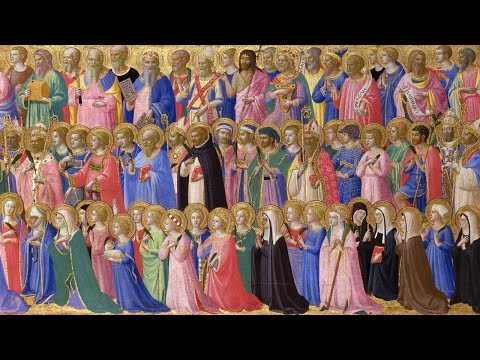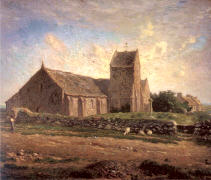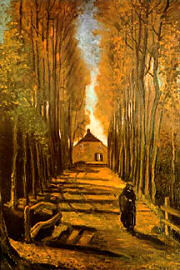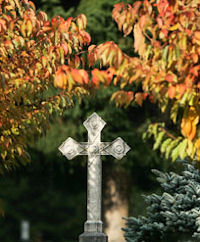Survey: Majority of U.S. Catholics oppose overturning of Roe v. Wade
Abortion-related questions -- and Americans' responses to them -- were front and center in the new American Values Survey issued Oct. 27 by the Washington-based Public Religion Research Institute.
A majority of Catholics surveyed opposed the Supreme Court's decision to overturn Roe v. Wade, which legalized abortion in the United States, including 56% of white Catholics and 52% of Hispanic Catholics.
Fully half of white Catholics said they are very motivated to vote when thinking about the Roe v. Wade decision, but Hispanic Catholics had the lowest numbers of any religious subgroup reported by PRRI at 32%.
Among all survey respondents, abortion finished fifth in importance among a list of 16 issues suggested in the poll. Finishing ahead of abortion were the increasing cost of houses and everyday expenses, the health of democracy, crime, and access to guns and gun safety.
Finishing below abortion, in descending order, were education, immigration, health care, Supreme Court appointments, climate change, the growing gap between rich and poor, jobs and unemployment, terrorism, racial inequality, infrastructure such as bridges and the electrical grid, and the coronavirus pandemic.
Among white Catholics, the top three concerns they take to the polls are the health of our democracy, increasing costs and crime. Each three garnered a solid majority of respondents.
The report said 62% of those surveyed said abortion should be legal in most or all cases. PRRI said that since it began asking this question in 2010, the proportion of Americans who say abortion should be illegal in most or all cases has never been above 45%, and the proportion who say it should be illegal in all cases has never been above a peak of 19%, in 2014.
According to the poll, 24% said they will only vote for a candidate who shares their views on abortion, compared to 53% who say a candidate’s position on abortion is just one of many important factors, and 19% who do not see abortion as a major issue when voting.
While the percentage is climbing of those who say a candidate must share their views on abortion -- it was 20% in 2020 and 18% in 2012 -- the 19% who do not see abortion as a major issue is at a low mark for PRRI polling, down from 33% in 2012 and 26% in 2020.
"There is scant support for laws restricting access to birth control," said the PRRI report, titled "Protected: Challenges in Moving Toward a More Inclusive Democracy -- Findings from the 2022 American Values Survey." Hispanic Catholics showed the strongest support, but at only 30%, while white Catholics joined white mainline Protestants and the religiously unaffiliated at the bottom with only 10% support.
Three-fourths of those surveyed opposed laws that would make it illegal to cross state lines to obtain an abortion, including 55% who strongly oppose them. Hispanic Catholics showed 29% support for such laws, while white Catholic support was less than half that, at 14%.
Similarly, proposals for laws that would ban abortion pills from being sent by mail gained only minority support. White evangelical Protestants led the way with 47% support, while Hispanic Catholics registered 40% support and white Catholics only 25% support.
Between two-thirds and three-fourths of Catholics surveyed -- 73% of Hispanic Catholics and 68% of white Catholics -- favor ensuring that at least some health care professionals in their community provide legal abortions. All religious groups surveyed, except white evangelicals, gave majority support to this concept.
Abortion, though, was far from the only issue PRRI asked about.
Regardless of religious or political stripe, a majority of those surveyed said the country was going in the wrong direction, including 81% of white Catholics and 60% of Hispanic Catholics.
There was less agreement on whether the United States is worse now than in the 1950s. A slim majority of white Catholics agreed, but less than half of Black Protestants (48%) and Hispanic Catholics (44%) agreed.
Asked whether they thought God intended for the United States to be a "promised land," only 36% of white Catholics and 32% of Hispanic Catholics agree, compared to half of white evangelicals.
Fifty percent of white Catholics said they perceive newcomers to the country as a threat, but only 31% of Hispanic Catholics did.
Strong majorities of Black Protestants (87%), Hispanic Catholics (76%), the religiously unaffiliated (72%), and non-Christian religious Americans (70%) agree that a Black person is more likely to get the death penalty, but only 47% of both white Catholics, white mainline Protestants agree.
What may be the most stark difference in the poll is that 76% of Black Americans and 60% of Hispanic Americans say the bigger problem is eligible voters being denied the right to vote, while 54% of white Americans say the bigger problem is people who are not eligible casting votes.
The survey was conducted among a representative sample of 2,523 adults ages 18 and older, including 390 white Catholics and 164 Hispanic Catholics, living in all 50 states in the United States. Interviews were conducted online Sept. 1-11, 2022. The margin of error was plus or minus 2.3 percentage points at the 95% level of confidence.


 The Solemnity of All Saints (
The Solemnity of All Saints ( In England, saints or holy people are called "hallowed", hence the name "All Hallows’ Day". The evening, or "e'en" before the feast became popularly known as "All Hallows' Eve" or even shorter, "Hallowe'en".
In England, saints or holy people are called "hallowed", hence the name "All Hallows’ Day". The evening, or "e'en" before the feast became popularly known as "All Hallows' Eve" or even shorter, "Hallowe'en". We have entered the 21st century. It is getting harder to be "in" the world but not "of" the world. How are we to tread carefully to find balance in a secular holiday? We have an onslaught of Halloween witches, ghosts, goblins, vampires, etc. everywhere we turn. How do we bring a message to our children to say that being a Christian does not mean that we cannot have fun and enjoy some secular practices? How do we convey that that we must not constantly be negative and condemn everything?
We have entered the 21st century. It is getting harder to be "in" the world but not "of" the world. How are we to tread carefully to find balance in a secular holiday? We have an onslaught of Halloween witches, ghosts, goblins, vampires, etc. everywhere we turn. How do we bring a message to our children to say that being a Christian does not mean that we cannot have fun and enjoy some secular practices? How do we convey that that we must not constantly be negative and condemn everything?

